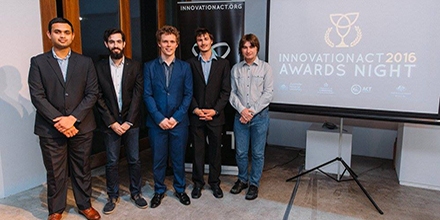Smartphones and tablets running out of battery could soon be a problem of the past, thanks to an innovative new technology developed by five Australian National University (ANU) engineering students.
The fifth year Bachelor of Engineering (R&D) students have developed an innovative wireless charging solution, Pixelated Induction.
“A significant problem in modern life is managing charge on personal devices. Chargers are cumbersome to transport, and there is always the risk that power will not be available at your destination” said team member Andrew.
Pixelated Induction is the world’s first customisable large-area wireless charging solution, allowing users to effortlessly charge their personal devices on-the-go.
“Users can charge their personal devices by placing them anywhere on the flat surface of a piece of furniture embedded with this technology,” he added.
The group believe their technology will transform society’s expectations about the availability of power, in the same way the world embraced WiFi.
Industry also believe in Pixelated Induction’s vision, with the team securing $10,000 from InnovationACT, an ANU initiative that provides skills, tools and networks to start-up companies in the ACT.
A prototype has already been developed by the team. They plan to spend the grant on branding and certification for the charging device, says team member Bennett.
“Being awarded the grant is very motivating – it’ll set us up well as we look to further develop Pixelated Induction”
Pixelated Induction was formed during the Engineering Innovations course, a requirement of all engineering degrees at ANU.
In this course, students develop an understanding of innovation processes and management within an engineering context, and put their ideas into practice by developing their own innovation. In the final week of the semester, student groups pitch their idea to investors in the hopes of securing funding.
Dr Matt Doolan, Senior Lecturer of the course, believes the systems engineering approach at ANU lends itself well to facilitating innovation.
“The technology that changes our lives is the result of successful innovations. These innovations rely on both high technology, and addressing needs of consumers. Systems engineers are highly effective in understanding both these competing influences.”
“Pixelated Induction is adapting a new technology to make it more accessible to the consumer. This innovation shows enormous potential, and clearly demonstrates the outstanding abilities of our students.”
The team behind Pixelated Induction agree.
“The course gives you lots of freedom; you’re provided with the context and courses and the opportunity to pursue whatever you’d like. Even though we’re all majoring in different fields, our systems engineering background means we’re all very flexible engineers, which lends itself well to device design.”
The team plan to spend their summer working on the project, and further developing the prototype.

